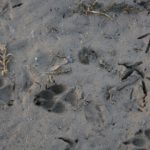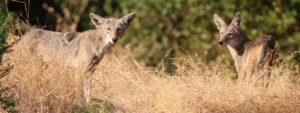
What We Do
Clubs & Groups - TRACKING CLUB

Becoming an animal tracker will completely change the way you see the world. With a little effort and guidance, anyone can identify many clear animal tracks and signs with ease.
We are all already trackers. We track with our eyes and hands when navigating smart phones or reading. We can tell who is or has been home when we walk into our living spaces. Even driving a car is a form of tracking. In this club, we will meet monthly at a designated spot and investigate tracks and signs of all the creatures, human and non-human, that frequent our natural spaces.
“It is hard to over-value the powers of the clever tracker. To him the trail of each animal is not a mere series of similar footprints; it is an accurate account of the creature’s life, habit, changing whims, and emotions during the portion of life whose record is in view.” –Ernest Thompson Seton, Boy Scout Handbook, 1911.
Animal tracks are a window into an otherwise hidden world of wild animals. Learning how to track and identify the footprints of animals is an ancient and largely forgotten art — one that’s not only important for hunters, but also enhances any outdoorsman’s experience in the wild. It’s fascinating to know what creatures are sharing the woods with you, and trying to track them down by following their trail is a lot of fun. Learning how to read tracks allows you to pick up on the little dramas enacted by wildlife that usually go unnoticed by the human eye. It’s a skill that both deepens your understanding of nature and heightens your all-important powers of observation.











